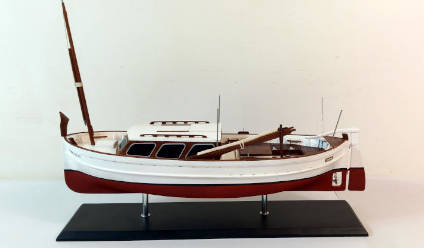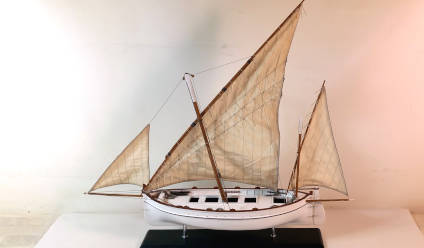The Llagut
The llagut is a traditional Catalan boat that has been present on the Mediterranean coasts for centuries. Its name comes from the Latin “laguncula”, which means “small boat”. This boat is not only a symbol of Catalonia’s maritime culture, but also a testament to the craftsmanship and adaptability of its inhabitants to sea conditions.
Origin and history of the Llagut
The history of the Llagut dates back to very ancient times. It was mainly used for fishing and transporting goods along the Mediterranean coast. Its design and functionality reflect the needs of coastal communities that depended on reliable and versatile vessels.
Over the centuries, the llagut was adapted to changing needs. Although originally equipped with sails, oars were later added to improve maneuverability in narrow coastal waters. With the introduction of engines in the 20th century, many llaguts were equipped with propulsion machines to make fishing more efficient.
Characteristic features of the Llagut
The Llagut is characterised by several specific features that differentiate it from other types of boats:
- Hull shape: the hull of the Llagut is slender and symmetrical, which gives it great stability and navigability. This shape allows the boat to navigate safely in both calm and stormy weather.
- Materials: traditionally the Llagut was built from wood, especially from resistant woods such as oak or pine. The use of wood allowed boat builders to create robust and durable boats that could withstand the challenges of the sea.
- Sails: In its origins, the llagut was equipped with one or more lateen sails. These triangular sails, attached to a tilted mast, allowed it to navigate effectively even in unfavourable wind conditions.
- Size: The length of a llagut usually varies between 4 and 10 metres, depending on its specific use and regional construction methods.
Functional adjustments and intended uses
The llagut was used for different purposes, leading to different designs and adaptations:
- Fishing: As a fishing vessel, the Llagut was ideal for coastal fishing. Its stability and manoeuvrability allowed fishermen to approach the shore and cast and retrieve nets effectively.
- Transport of goods: Thanks to its spacious hull, the llagut could also be used to transport goods between coastal towns. This was especially important in times when land transport was difficult or unsafe.
- Rescue operations: The Llagut's robustness and reliability also made it a suitable vessel for rescue missions at sea.
Cultural significance and conservation of the Llagut
The Llagut is more than just a boat; it is a symbol of Catalonia's seafaring tradition. Organisations such as "Voile Latine de Sète et du Bassin de Thau" are committed to preserving and promoting these traditional boats. They organise events and workshops to pass on the knowledge of the construction and use of the Llagut to future generations.
In cities such as Barcelona there are opportunities for both locals and tourists to experience the Llagut first hand. Activities such as rowing on the Llagut Catalá offer a unique opportunity to experience the maritime culture of the region first hand.
Conclusion
The Llagut is an impressive example of the combination of functionality, craftsmanship and cultural significance. Its distinctive features and adaptability have made it an indispensable part of Catalan coastal culture. Thanks to the efforts of enthusiasts and organisations, the heritage of the Llagut lives on and can be enjoyed by future generations.


We can make any model ship, you can see other examples at https://www.nauticadecor.com/index.php?id_cms=25&controller=cms
 Cookie preferences
Cookie preferences






